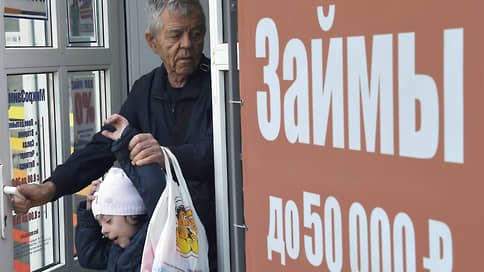The largest microfinance organizations are actively offering banks cooperation in the technology sector
[ad_1]

The largest microfinance organizations began to actively offer banks cooperation in the technological field. Companies offer IT solutions for launching their own turnkey microfinance organizations. There is demand from banks, because this is an opportunity to reduce the number of their own loan refusals and maintain a high level of issuance in the face of tightening macroprudential limits. Microfinancers gain access to bank funding and client base. However, the Bank of Russia may not appreciate such cooperation.
MFOs offer banks assistance in creating their own microfinance organizations, interlocutors in several large companies told Kommersant. “This will give microfinance organizations the growth of their own business and client base, while banks will retain clients within the group plus the opportunity to earn money by funding the microfinance project,” explains a top manager of a large microfinance company.
As Kommersant’s interlocutors explain, microfinance organizations completely “build the technology, scoring, set up issuance, and the bank provides funding and shares profits.” “We are considering two options for such cooperation – establishing joint projects with outsourcing of the IT platform and creating a joint company,” explained Anna Kalugina, CEO of the fintech service CarMoney. According to her, the bank “has an interest in monetizing rejected traffic (clients who were denied loans.— “Kommersant”), and from the MFO side – in the bank’s client base, funding and payment services.”
Several banking groups are already successfully operating in the MFO segment, in particular, OTP Bank (OTP Finance company) and Tinkoff Bank (T-Finance). In addition, a number of banks actively finance MFOs. However, a number of even large banks are just trying to develop this segment. For example, Rosbank acquired the company at the beginning of the year (see Kommersant on January 9), Sovcombank, Gazprombank, MTS Bank are interested in the MFO market, Kommersant’s interlocutors list. However, MFOs are counting on partnerships with fairly large banks – they need a flow of retail loans from 500 thousand per month, since their models are designed for large incoming traffic. “The main goal in this case is broader segmentation of retail and coverage of the marginal client base, while regulatory arbitrage and maneuver for compliance with macroprudential limits by the banks themselves seem to be an important, but still secondary reason,” notes General Director of IFC Seimer Roman Makarov . The banks did not respond to Kommersant’s requests or declined to comment.
At the same time, almost all banks do not have their own competencies in microfinance with low checks for short periods, since this in itself implies working with a specific client base. “Therefore, cooperation between banks that have long-term, inexpensive funding and refusal traffic with large microfinance organizations has significant synergistic potential,” admits Ivan Uklein, director of bank ratings at the Expert RA agency.
However, such synergy between banks and MFOs may not be appreciated by the regulator. “Against the backdrop of growing debt burden among the population, the creation of microfinance organizations affiliated with banks will make it possible to retain clients who do not meet the ever-tightening regulatory criteria within the group’s perimeter, which will allow banking groups to maintain interest income in the high-margin segment,” says Konstantin Borodulin, director of bank ratings at NRA. And one of the key tasks of the Bank of Russia is to reduce the debt burden on citizens and maintain a balance in terms of risk appetites of credit institutions, and this could lead, on the contrary, to further tightening of regulation of the MFO sector, the expert notes.
[ad_2]
Source link





